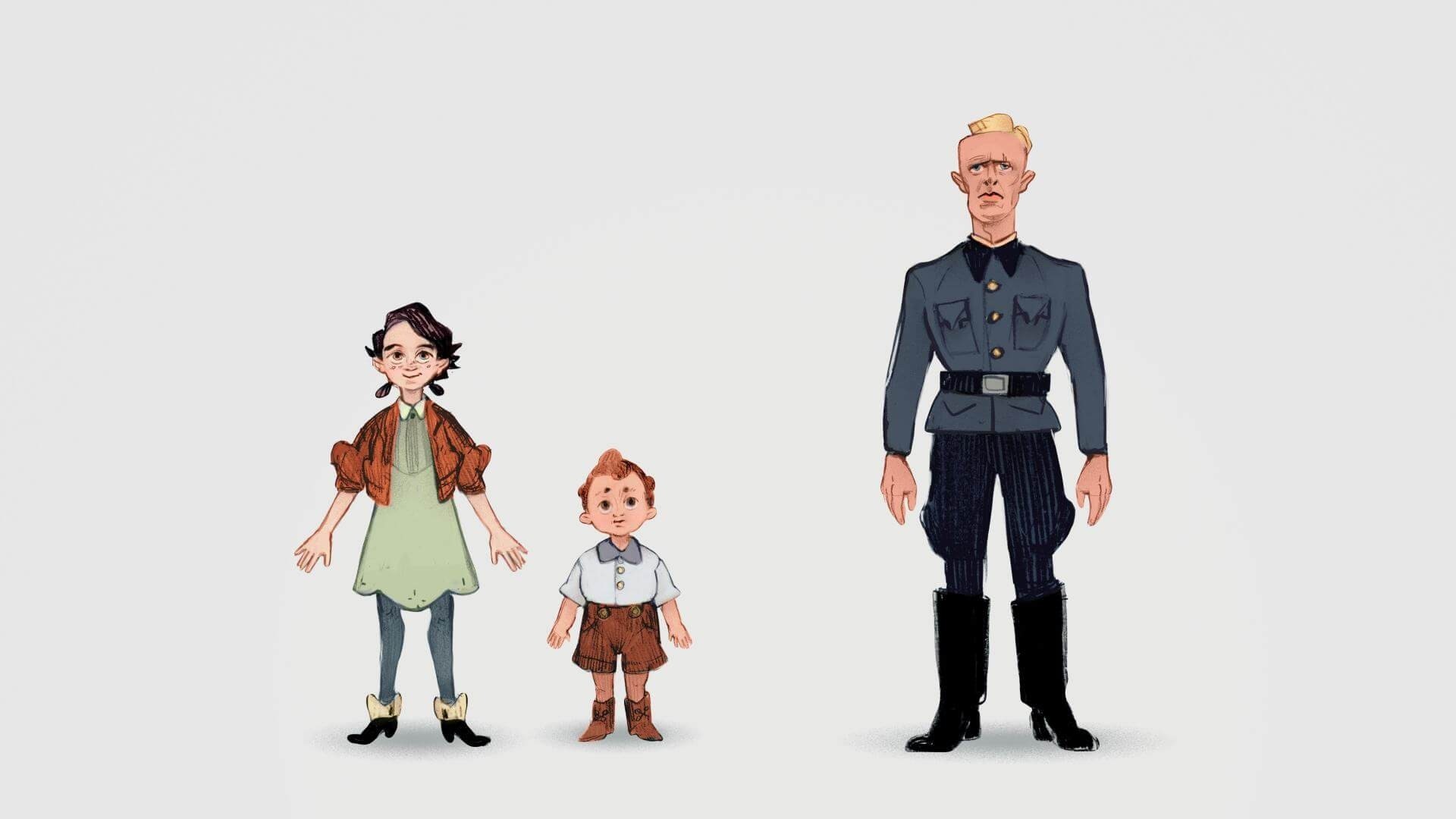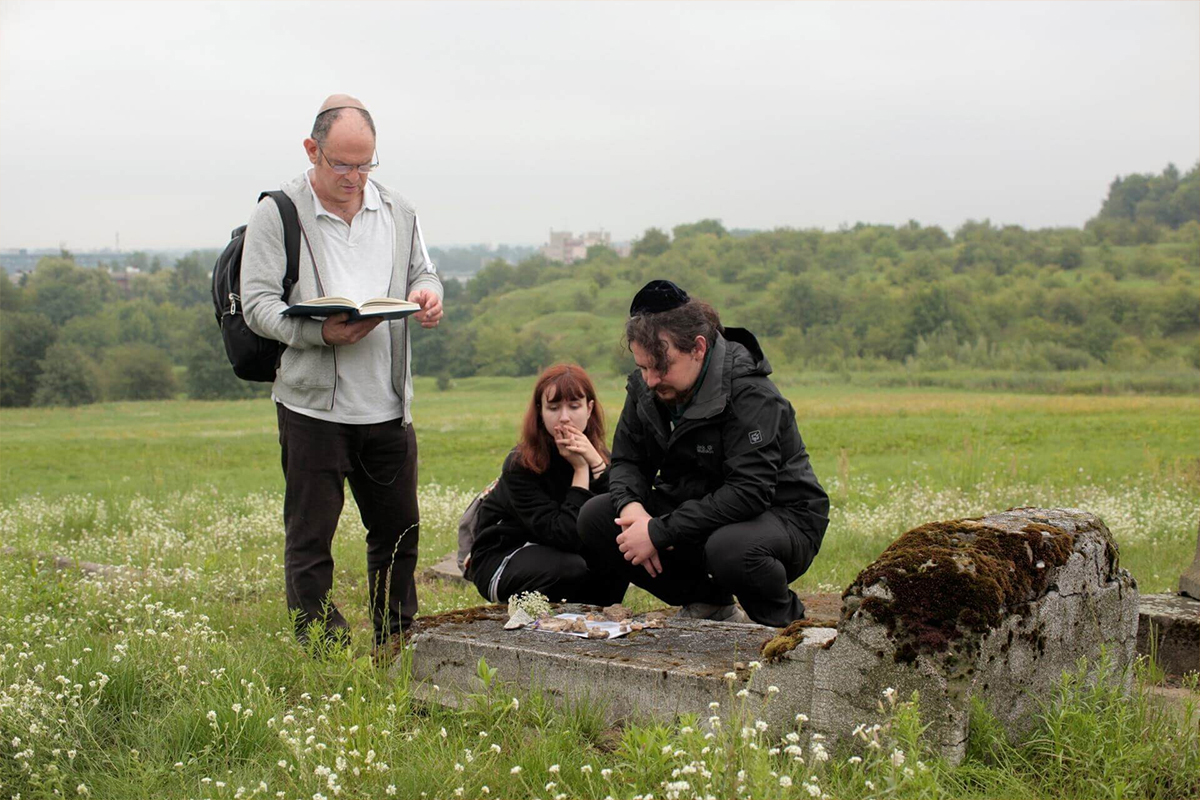Some of us learn about the Holocaust through our parents or in Hebrew school, some of us from a teacher or Anne Frank’s diary. In Jana Matthes and Andrea Schramm’s new documentary “Tacheles: The Heart of the Matter,” two video game designers in Germany — one Jewish, the other not — try to teach the Holocaust through the lens of active protagonists loosely based on their own families.
The designers say that Holocaust films (particularly “Schindler’s List,” which they berate multiple times) are passive, turning the viewer into a mindless consumer of graphic images. The video game, however, will allow players to make choices: the choice to fight back, if you play as the young Jewish girl, or the choice to do the right thing, if you play as the Nazi.

It’s an attempt to inject some agency into both characters, and to challenge some common narratives: of Jews going like lambs to the slaughter and of SS officers mindlessly following orders. But it ends in a haze of misrepresentation as the game’s Jewish designer, Yaar, grapples with the role he wants the Holocaust to play in his own life. He wants to outrun it and believes, at first, that this is possible, that his identity can be reformed entirely outside of a history he feels should not affect him. But his logic and his heart don’t match. He bemoans the “filth” and “shit” of traumatized Jewish identity in a post-Holocaust world, imploring his father to let go of the past his own mother, a survivor, imposed on him, but ultimately can’t reconcile the game’s fabricated happy ending with the world they walk in.
“The only thing I associate with Judaism is victimhood,” he tells his mother, who at first bristles at the idea of a video game that allows both Jews and Nazis so much choice. But she understands her son’s impulse to reckon with a modern Germany that’s caught between harsh self-flagellation and the looming threat of forgetting. The only thing worse than Germans pitying you for being Jewish, she says, is when they fetishize you, exclaiming love for the unique perseverance of your existence and treating you like an object to be studied.
Yaar’s life straddles two worlds, one where Jews are in the majority and one where he is treated as an anomaly. Born in Jerusalem, Yaar’s family moved back to Germany when he was 5. But his Polish-born survivor grandmother, Rina, stayed behind, claiming she’d seen enough of Germany to last a lifetime. In the film, Yaar bounces between the two countries and their stark contrasts. In one moment he lets a rabbi at the Kotel lay tefillin on him; in another, he finds his friend and co-designer, Marcel Nist, giggling at his haggling skills when he negotiates a bargain “Israeli style” at a flea market.
Marcel and Yaar aren’t friends because of their differences in background or because they agree on a singular way to view the Holocaust. “We’re friends because we don’t give a shit,” Marcel explains, bemoaning that Yaar could dress up and play soldier as a child but he could never do the same in his German adolescence. To Marcel, the obligation to look out for your fellow man, to prevent genocide, is a human one, not one that should be lessened or strengthened by his German identity. His family lied for some 50 years about an SS officer in their ilk, and though he respects his elders’ initial sense of shame, he doesn’t view his own life as at all related to theirs. While Yaar’s outlook changes over the years that they develop the game, Marcel’s appears stagnant.
Yaar is desperate to feel the same disconnect as Marcel, and insists that the Holocaust has no impact on his everyday life in the 21st century. This belief is, of course, negated by the very fact that the two are making the game, designing a chubby-cheeked fictionalized version of Rina and a cartoon villain SS officer named Edgar. They’re inspired in part by Wolfenstein, a long series of shooter video games that sometimes see an Allied prisoner of war defeating Nazis and sometimes see a world in which the Nazis win. They name their game “Als Gott Schlief,” or “While God Was Sleeping,” echoing Yaar’s late grandfather’s description of the Holocaust: When the Germans invaded Poland in 1939, the Jews thought God would protect them. Throughout the war, maybe God was sleeping.

For Yaar, the legacy of the Holocaust is not organically inherited by Jewish children, but forced onto them by trauma-laden parents. He sees his father’s childhood as one marked by violence — not the physical violence his grandmother faced in Krakow, where she was held in the Płaszów concentration camp until a local woman smuggled her and her younger brother out, but the psychological impairment that came from being raised by a woman still trapped by the memories of her youth. Rina shaped her son in the image of her lost brother, whose fate is finally uncovered when Yaar and his father track down the descendants of that aforementioned local woman.
To Yaar, and to other Jews generations removed from the Holocaust, remembering the dead can feel less like an honor and more like a burden that erases your identity in favor of someone else’s. This struggle is at the heart of the film, encapsulated by two young adults whose families come from very different Germanys, but who both feel a calling to relieve two populations of tremendous, transgenerational guilt. The guilt is exacerbated by a revelation that Rina — when confronted with a choice not unlike her video game counterpart’s choice to fight back — chose self-preservation over heroism. Yaar and Marcel come to realize that the Holocaust was not made up of Jews who survived through luck and Nazis too swept up in frenzied ideology to make conscious decisions: It was made up of choices, many of them violent.
In the end, the fate of the video game is left ambiguous, as Yaar, Marcel and Sarah, another designer and Yaar’s girlfriend, disagree on the core choices the characters will make. If they kill off the Jewish girl’s brother and showcase a hardened Nazi criminal, aren’t they just adding to the endless depressing pop culture Holocaust products? If they let the brother live and the SS officer chooses to let prisoners go, aren’t the stakes of the game lowered, and the history it depicts false? The project would be more feasible if the designers didn’t have personal attachments to the characters and events, but their attachments are their whole reason for starting it. More importantly, they come to realize that an impersonal Holocaust isn’t one worth representing. Removing the intrinsic Jewishness or Germanness from the characters renders them lifeless; removing these cultural markers from Yaar and Marcel would render them soulless.
“That’s the problem: The silence didn’t bring peace, but more suffering,” Yaar says of his grandmother’s denial of the choices she made as a child. The answer the documentary proposes isn’t to succumb to the overpowering weight of a legacy, or a tragedy, or a nation, but it’s not to ignore it, either. It has to live side by side with you, like a shadow, or a friend.
“Tacheles: The Heart of the Matter” screens online at the Human Rights Watch Film Festival through May 27.



